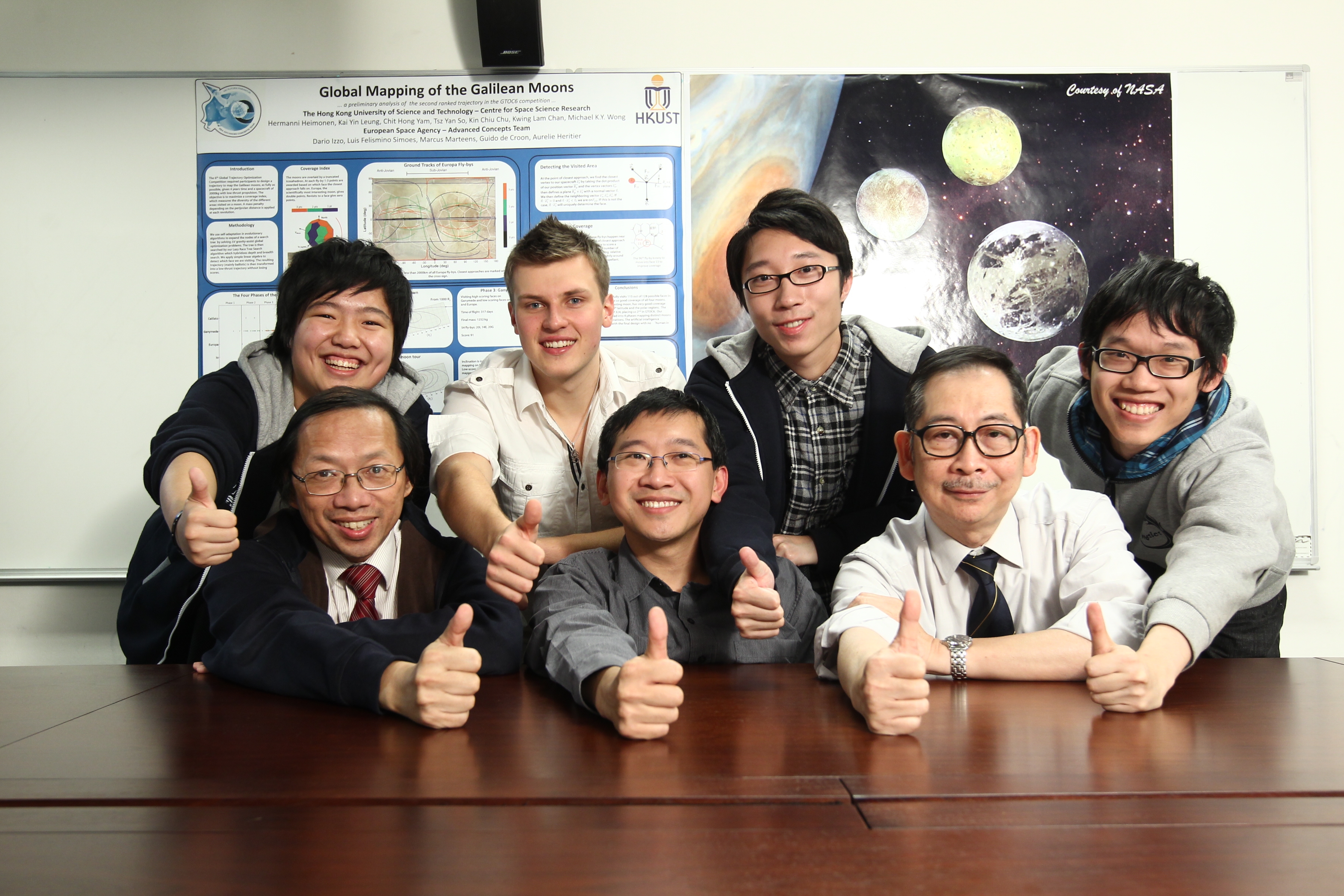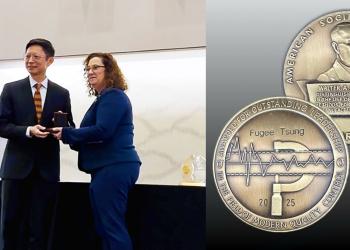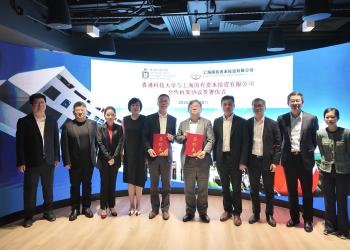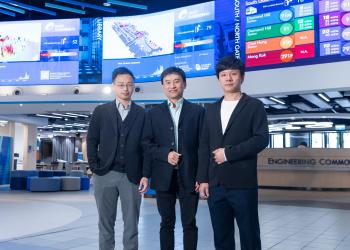HKUST Outscores International Competition on Planet Jupiter Orbit Design
A team comprising faculty and students in the School of Science made a splash of colors in its first ever Global Trajectory Optimization Competition (GTOC), where it landed in second place ahead of 32 contesting teams from the US, Germany, Russia, Mainland China and others. The solution is set to provide insights for the major space mission to the Jovian system by the National Aeronautics and Space Administration (NASA) and European Space Agency (ESA) in 2020.
This year, the participating teams were tasked with the design of a space orbit that achieves maximum coverage of the Galilean moons of Jupiter, including Io, Europa, Ganymede and Callisto. The Galilean moons have long been a subject of sustained scientific interest due to the hypothesis of a liquid ocean existing under the Europa’s icey surface which may serve as an abode for extraterrestrial life. Meeting time, fuel, mass and check-point criteria, the teams were to map in proximity the 32 stipulated regions over the surfaces of the four moons in the most optimal fashion.
The HKUST team comprises Prof Kwing-lam Chan, Professor of the Department of Mathematics and Director of Center for Space Science Research, Prof Kwok-yee Wong, Professor of the Department of Physics, Dr Chit-hong Yam, consultant of the Center for Space Science Research, as well as four second year undergraduate students including Tsz-yan So of the Department of Mathematics, Kai-yin Leung, Kin-chiu Chu and Heimonen, Hermanni Juuso Elias of the Department of Physics. In collaboration with ESA, the team made use of handy and comprehensive orbit calculation methods and devised its own program based on heuristic algorithms, making sure the orbit satisfied all requirements of the Competition. With 141 close encounters at the moons of Jupiter, the joint team scored 308 and clinched the second place with the honor of having visited most of the spots, missing the winning team from Italy by mere 3 marks. The detailed results could be found at http://sophia.estec.esa.int/gtoc_portal/?page_id=26.
Prof Nancy Ip, Chair Professor and Dean of Science said, “All the student participants were in their first year of study at the time of the competition. Yet, despite being confronted with an unfamiliar topic, and competing with other high-caliber contestants, they used their combined knowledge in mathematics and physics effectively while showing remarkable resilience to reap their well-deserved reward. Furthermore, the team displayed an impeccable team spirit by encouraging each other on to rise above the odds. These are the essential qualities required to be successful in science and technology research. It is our goal at the School to foster the growth of our students to help them realize their full potential.” Despite this being their first time participating in the competition where world-class masters converge from all over the world, HKUST students which were then in their first year have come under excellent tutelage of faculty and advisors through Undergraduate Research Opportunities Program (UROP) and swiftly mastered the principles and techniques of space orbit designs in just one summer. Interdisciplinary thinking aside, their excellent analytical and problem-solving skills plus seamless teamwork are key to this impressive achievement.
The GTOC teams were invited to a workshop in the US and engage in a fruitful dialogue with other participants on their experience of the designing space orbit. They also toured the state-of-the-art research facilities of NASA at Caltech, gaining a deeper appreciation of what first-class aerospace technology entails.
Now in its 6th year, GTOC opens every one or two years with an aim to raising the standard of space orbit design and provide a platform for world’s best researchers and engineers to get together and exchange ideas on the latest trends and technologies in the field. For years, it has elicited enthusiastic participation from experts of all quarters, who are eager to hone their skills and enhance understanding through joining this intense competition. Hosted this year by NASA’s Jet Propulsion Laboratory, GTOC gathered the world’s top aerospace engineers and challenged them to come up with solutions to a highly complex problem of interplanetary trajectory design within a month.
Reference Materials:
Presenations:
/press_release_archive/eng/news/photos/20121210-1004-GTOC_Poster-1.pdf
/press_release_archive/eng/news/photos/20121210-1004-gtoc6_act_hkust_hippo_v3.pdf
/press_release_archive/eng/news/photos/20121210-1004-gtoc6_act_hkust_MichaelWong_v2.pdf
Video link:
https://www.youtube.com/watch?edit=vd&v=fs3hCDZ8Kno
For media enquiries, please feel free to contact :
Mavis Wong
Tel: 2358 6306
Email: maviswong@ust.hk












